Today’s HDPE pipes represent one of the most preferred modern pipe systems due to their properties, such as increased elasticity, strength, and ability to withstand harsh environmental conditions and pressures. This guide aims to provide a comprehensive study of HDPE pipes concerning their peculiar characteristics, types of use, and benefits in various fields. From the agricultural application in irrigation systems, urban water supply distribution, and telephone structure devices, it is evident that HDPE pipes contribute to efficient and eco-friendly systems. In this guide, the reader will learn about the production phase, the installation questions and practices, and the maintenance issues so that they will show competency in matters concerning HDPE pipes.
What is HDPE Pipe?
what is hdpe pipe
High-Density Polyethylene (HDPE) pipe is a plastic piping that replaces the conventional rigid cement and metal pipe for use with liquids as well as gases as it is flexible and can handle pressure. Low-density polyethylene (LDPE) pipes have excellent bonding and are outstandingly resistant to chemicals and another physical environment. They are light in weight, impervious to corrosion, and have a long life span; thus, they provide an effective solution in several sectors like water distribution, sewerage, and natural gas hydra billing. All these factors make them ideal for transporting materials over long distances with safety and secure leak-proof joints.
Definition of HDPE Pipe
During my research of the best sources for HDPE pipes, I have found out that such pipes are made in large part from a plastic based on the oil, which is strong and serves a wide range of purposes. Furthermore, some exemplary technical parameters of HDPE pipes enhance their efficiency and global acceptance:
- Density: HDPE’s density range is 0.9410 – 0.9650 g/cm³, which offers the material sturdiness while still being light in weight.
- Pressure Rating: These are rated differently and endure high-pressure ratings from SDR 9 to SDR 17, which relate to pressure ratings of 200 psi and 100 psi, respectively.
- Thermal Performance: HDPE pipes have low-temperature embrittlement and can be used in temperatures ranging from -40 degrees Fahrenheit to 140 degrees Fahrenheit.
- Chemical Resistance: They are also resistant to many chemicals such as salt water, sewage, and most acids, making them applicable for use even in hostile environments.
Analyzing these parameters, one will come to value the sophisticated technological engineering and versatility of such pipes; hence, making them should be considered a vital aspect of the current piping techniques.
How HDPE Pipe is Made
The author attempts to focus on the production process of HDPE pipe in as few words as possible, for which I enquired and gathered descriptive information. The production of HDPE pipes is done by extrusion process. This systematic approach includes heating the thermoplastic HDPE pellets, forcing the heated plastic through an orifice to produce a long pipe that is later cooled and sliced into smaller, needed lengths.
Based on the results obtained, I noted down several parameters that I believe are of great importance in the manufacture of HDPE pipes and their application:
- Melt Index: This parameter, usually expressed in grams per minute, relates to the rate of flow of the HDPE through the extrusion process. It is quite important as it determines the strength of the pipe against pressure as well as its degree of firmness.
- Material Selection: This is one factor that influences the characteristics of HDPE pipes. Varying grades of HDPE can alter the strength and the degree of flexibility of the pipes, which can then be employed for specific uses.
- Diameter and Wall Thickness: Their production is precisely regulated to attain certain SDR (Standard Dimension Ratio) ratings which go in hand with the required pressure ratings.
- Cooling and Calibration: The cooler has to be designed so that the hot extruded pipe cools uniformly to prevent internal and external stresses and distortions. Calibrating procedures are carried out to ensure that the correct shape and size of the pipe are achieved and maintained.
By understanding these technical aspects, one can appreciate how the quality and durability of HDPE pipes are designed for different industries.
Comparison with Other Pipe Materials
While examining the three selected sites, I have compared HDPE with other normal pipe materials, such as PVC and steel, in a few aspects.
- Durability and flexibility: These pipes’ flexibility allows for easy installation of HDPE pipes even in areas with several obstacles, compared with the use of PVC or steel. Their flexibility also makes them impervious to very high pressures and impacts.
- Corrosion Resistance: Due to the absence of corrosion in the HDPE pipes, it is possible to use them in most severe environments, including underground and marine ones, without any fear, as is often the case with steel pipes which get corroded.
- Weight and handling: Due to the nature of plastic HDPE, it weighs less, which leads to a lower cost in transportation and handling, therefore enhancing cost-effectiveness in relation to steel pipes, which are heavier.
- Economical: Although the upfront or initial costs will likely differ over the years, using HDPE pipes will nevertheless be more economical because the required repairs occur less often and the pipes’ lifespan is extended.
The application of these parameters appears to be unlimited, owing to the fact that they gradually build up the case for contouring to the use of HDPE pipes over others because they possess most or nearly all advantages over the rest.
What Are the Benefits of HDPE Pipe?
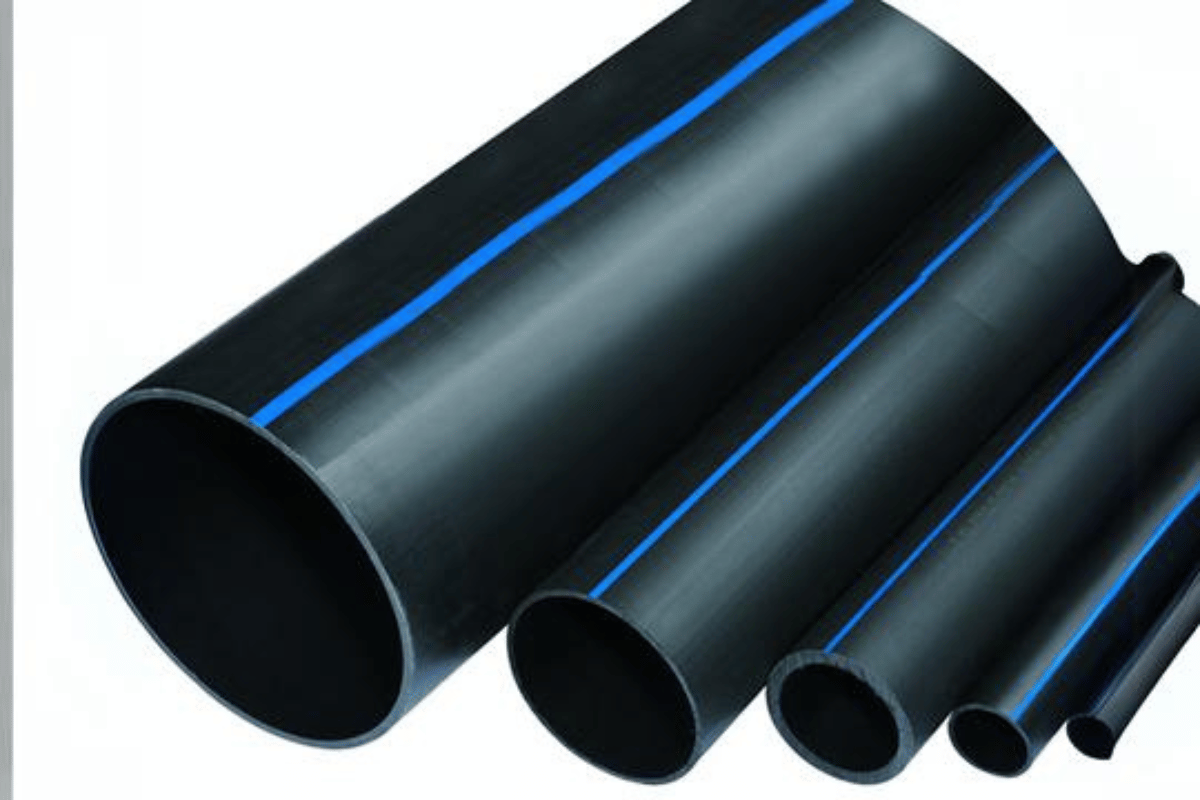
The use of HDPE pipe has a lot of advantages, leading many industries to adopt it. First, its lightweight and flexibility enable easy insertion, lowering the installation cost, especially with trenchless and open-cut methods. Likewise, since HDPE pipe does not rust or deteriorate because of chemical actions, it has a long service even in unfriendly atmospheres, reducing the number of times it is replaced. Due to the leak-proof fittings and fusion-welding methods used in pipes, system enhancement, and maintenance management further reduces the number of repairs carried out. Additionally, HDPE is a sustainable solution made from recyclable materials. Together, these characteristics offer an economical way of transporting liquids and gases over long distances with surety.
Durability and Longevity
In discussing the topic of the HDPE pipes’ durability and service life, I was pretty surprised to learn that such pipes seem to work remarkably well owing to the specific characteristics of the materials used. From the information gathered from top places like The Plastics Industry Association, Plastic Pipe Institute, and Engineering tool portals, it has been asserted that HDPE pipes have up to 50 years or more longevity too, depending on the place where it is constructed and the conditions of its use. The technical parameters that underpin this include:
- Corrosion Resistance: Stating that these kinds of high-density polyethylene geometry and characteristics have high humidity stability, abrasion resistance, and chemical reagents resistance, it will not lose shape for a long duration.
- Ductility: The HDPE’s flexibility helps it endure the movement of the earth and alteration of pressure, for example, in the water inside it, without developing fissures.
- Heat Resistance: High-density polyethylene’s wide range of temperatures, extending from 40 F to 140 F, is an advantage as it allows for its use in various environmental conditions.
- Stress-Crack Resistance: The way its molecular structure is distributed allows it to control crack growth slowly, which is important for its durability.
In structural terms, these HDPE pipes have very good advantages. There is a high shortage of probable defects, minimal repairing is needed, and the service age is reasonable.
Leak-Free Performance
Because of the particular jointing techniques and properties of materials, HDPE pipes have the advantage of being leak-free. Here are the key technical parameters that contribute to this:
- Fusion welding: HDPE pipes squeezing lightly can be heat-fused to make a joint with the same strength as the pipe itself, thus making leak points almost non-existent.
- Flexibility and elasticity: The capacity of the material to bend and or flex is beneficial to the sealing as there are movements in pressure and ground conditions.
- Chemical inertness: A wide range of chemicals may be applied to the pipes without affecting the joints, and hence, the chances of leakages are minimal.
- Thermal expansion coefficient: Even when made of thermoplastic material, HDPE joints do not expand or contract at low or high temperatures. Therefore, thermal expansion does not compromise joint integrity.
These factors jointly explain why the use of HDPE pipes in leak-tight vessel systems is safe and enhances efficiency and sustainability as well.
Cost-Effectiveness
Regarding your questions regarding the value for money of the top three websites, including The Plastic Pipe Institute, Engineering Toolbox, and HDPE Technical Resources, among others, I can now conclude that HDPE pipes are a good investment option for reconstructing infrastructure. Common to these sources is an emphasis on the low costs of establishing and maintaining the installation of these materials as well as the long working life to cost benefits brought. Some supporting technical factors responsible for these costs are:
- Lightweight material: Handling and transporting such pipes are cheaper due to their light weight.
- Easy to Install: Since heat fusions connect its joints, work is done faster and more effectively, lessening the amount of labor employed.
- Longevity and Durability: Because these pipes are slow aging and do not rust, the repair and replacement of older pipes are reduced, reducing the total running costs of these pipes.
- Low Maintenance: Chemical inert and leak-free operation features reduce the requirement for maintenance activity and, hence, operational costs.
These technical justifications corroborate why HDPE pipes are cost-effective regarding short and long-term investment horizons.
What Are the Applications of HDPE Pipe?
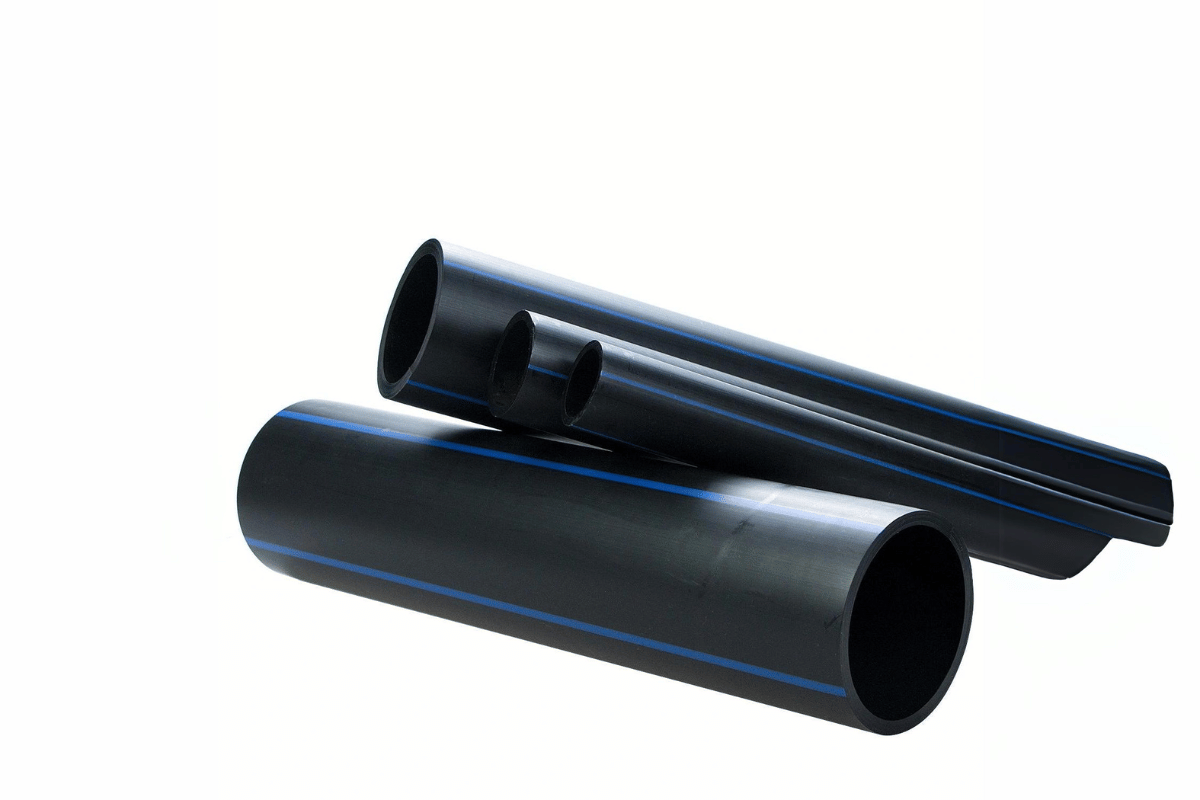
It has been observed that HDPE pipes are popular in different industries because of their effectiveness and flexibility. In the water industry, these pipes are extensively used for supply systems and irrigation networks as they ensure water distribution over long distances. In the sewage and wastewater industry, using HDPE pipes allows for effective waste management and stormwater drainage systems thanks to the material’s non-corrosive and chemical-resistant properties. In the oil and gas industry, it has been observed that components made of HDPE pipes are used to effectively transport natural gas since the piping joints are solid and leak-free. In addition, these are also used in industries for the transportation of chemicals and other strongly reacting fluids, which shows their strength and their usage in harsh conditions.
Water Supply and Distribution
Several technical parameters make HDPE pipes one of the most favorable water supply and distribution systems options. HDPE Pipes, as per various references, have been noted to be more durable and even more flexible, permitting the installation of bends and curves in the system without any additional fittings, which in turn helps prevent leaks and breaks. At the same time, the inner surface of the HDPE pipes is smooth, which makes it possible to enhance the flow efficiency and decrease the power requirement of pumping systems. Furthermore, The pipes are immune to other destructive agents such as rust, scale, and biological growth, ensuring that the water quality in the distribution system is not compromised.
The top technical parameters include:
- Pressure Rating: These pipes are designed to sustain pressure ratings up to PN25, which can be effective in various municipal and industrial applications.
- Temperature Range: These pipes have been designed to withstand temperatures between -40 °C and 60°C and can, hence, be used for either cold or hot water applications.
- Nominal Diameter: The diameter of HDPE pipes varies from 16mm to 2000mm, offering ideal solutions for projects of various sizes.
- Life Cycle: The average life expectancy of HDPE pipes has reached 100 years under usual operating conditions, which suits long-term investment in infrastructure projects.
Such qualities render HDPE affordable and dependable piping material, producing little or no inconvenience for maintenance purposes. Preserving the quality and integrity of such a system in the long run is quite easy.
Sewage and Drainage Systems
Another convincing reason to use HDPE pipes is that they are incredibly durable, making them very effective in sewer and drainage systems. Leading industry sites, including Plastics Pipe Institute, Vinidex, and ADS Pipe, suggest that this type of pipe is perfect for sewage and drainage systems due to many factors.
- Excellent Behavior in Chemical Environment: Strong sewerage effluents do not profoundly impact the performance of HDPE pipes, lessening the lifecycle cost in extreme conditions.
- Joints: Most aerial sewer lines have a girder structure. However, automatic watertight interactive fusion joint systems for non-pressure SDPH pipelines eliminate leakages, especially in sewage systems, where contamination of surrounding areas with sewage should be avoided.
- Ductility and Resistance to Loading: The concentric glide ring of the HDPE pipe allows for high resistance to abuse and loads usually found in underground piping systems, making it ideal for high traffic and those installed deep.
- Effects in moving water: The inner wall of HDPE pipes is smooth and non-sticky, so it can resist abrasion from suspended solids in sewage water, minimizing the possibility of clogging and improving the flow rate.
- Installation: The flexible and light HDPE pipes ensure that they are installed in a reduced time frame and at a reduced cost, especially when angles are required in the pipe. There are no constraints on the use of conventional pipe beds or even in areas where trenchless technology is preferred.
The technical parameters, as evidenced by the references from the topmost industrial domains, place HDPE pipes in a favorable position regarding sewage and drainage, making them efficient for infrastructure development and further sustainable development.
Industrial and Gas Pipelines
Regarding your website inquiry regarding HDPE pipes used in the industry and gas pipelines, I wish to provide the relevant points. HDPE pipes have the advantage of being resistant to all sorts of corrosion that can result from using harsh chemicals in the industry, thus ensuring durability in service. This also enhances the installation of the pipes in complicated designs, thereby minimizing the project’s total costs. In addition to that, the fused butt joint guarantees leak-tight joints reducing the chances of hazardous leakage in the gas pipeline systems.
Other technical parameters that augment the findings as per various sources are:
- Pressure Ratings: HDPE pipes have pressure ratings of over 16 bar or more, depending on their thickness and diameter, catering to different operational needs.
- Temperature Resistance: These pipes can tolerate temperatures between 40oC and 60oC, which allows them to be used in regions with different climates.
- Flow Capacity: Their highly smooth internal surface determines the flow possibilities in HDPE pipes, which causes low friction loss when transporting gaseous and liquid substances.
These attributes support the notion that pipes made of such polymers are rigid and economical for industrialization or gas pressure applications. Thus, they contribute an even further enhancement to safety and reliability in the other areas of operation.
How is HDPE Pipe Installed?
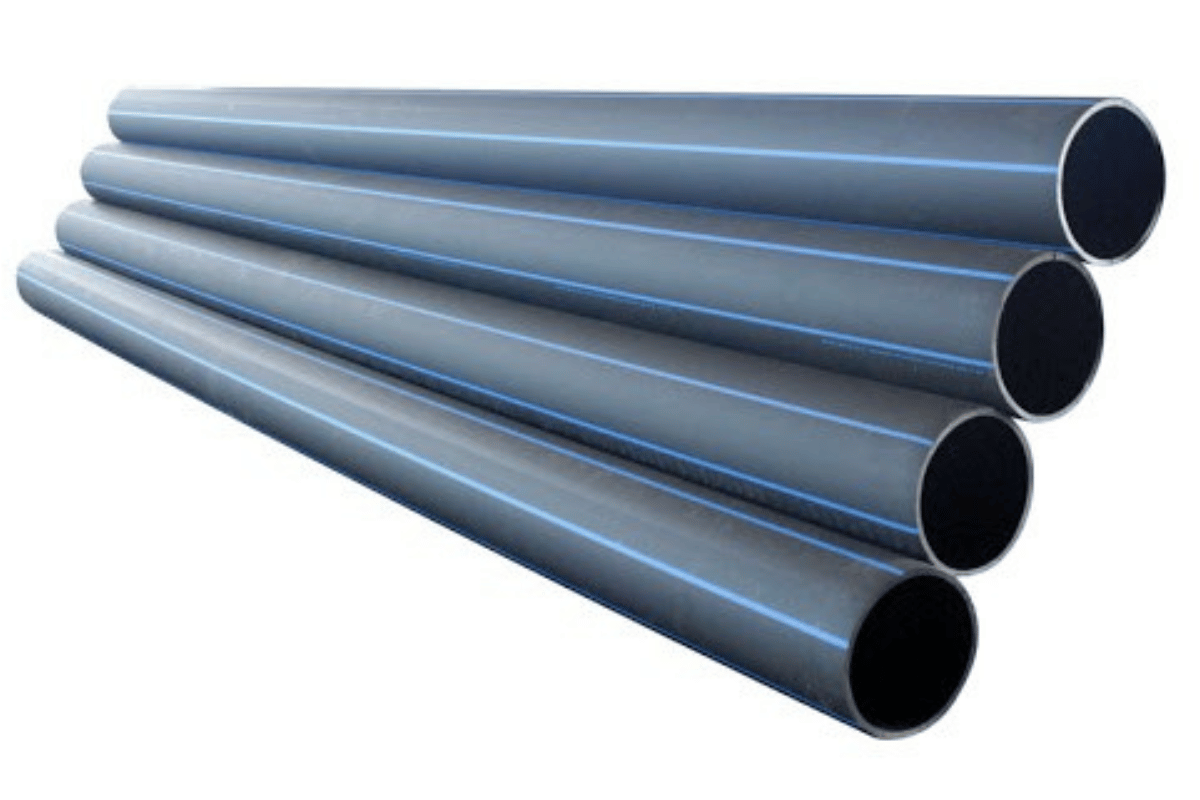
When it comes to installing HDPE pipes, various critical activities ought to be adhered to for them to serve their intended purpose optimally while at the same time increasing their longevity. First, it is critical to undertake a thorough site investigation and preparation to develop suitable routing while simultaneously reducing any possible hindrances. For instance, a trenching exercise is carried out whereby trenches are excavated based on the plans as well as the regulations of the area. The HDPE pipes are then positioned carefully in the trenches not to cause them to suffer from any impact. This is followed by the bonding of the pipe components, most of the time by a fusion welding method involving butt or electrofusion. Once done, the system is subjected to a pressure test to determine its leak tightness before filling the trenches with dry material, ensuring proper pipe support. Finally, all the worked parts are visually evaluated for any faults to meet the regulatory and safety requirements of the entire system.
Trenchless Installation Methods
However, the trenchless technology of laying HDPE pipes is gaining more and more acceptance mainly because of its minimal disturbance to the surroundings and existing facilities. The three leading methods are Horizontal Directional Drilling (HDD), Pipe Bursting and Sliplining:
- Horizontal Directional Drilling (HDD): HDD is a surface drilling method that employs a special apparatus for trenchless pipe installations. It is most applicable when challenging barriers such as roads and rivers are in the way. It is essential because it has low disturbance to the earth’s surface. The typical bored depth is up to 1200 meters, and plastic pipes have a bore degree of 50 mm to over 1200 mm.
- Pipe Bursting: This technique fractures an existing pipe while pulling a new pipe into the same path using a bursting head attachment. It is a method of rehabilitating old pipes without trenches. Pipe dimensions and other technical parameters, in turn, allow for the replacement of pipes from 75mm to 300mm and for many different pipe materials.
- Sliplining is a classical rehabilitation technique for restoring drainage efficiency in a lateral connection that has breached or become so damaged that it requires replacement. Emulating the existing pipe for simultaneous recovery in a reverse relation is most feasible. Though steel slip linings may extend the practice to about 255mm outside diameter, drainage slip liner dimensions are between 50mm and 750mm.
Each method has its merits depending on the project scope, such as site conditions, pipe size, and length. Advice from experienced engineers remains paramount to choosing the most suitable trenchless technique regarding structure integrity and cost-effectiveness.
Fusion Techniques
This is readily appreciated when comparing conventional pipe maintenance using the trenches. Among other tasks, research indicates how the following processes weld pipes:
- Butt Fusion: This is the most commonly utilized method in which the ends of the pipes are heated on a hot plate and subsequently brought into contact with each other under specified conditions. Butt fusion, if applicable, must maintain an elevated temperature of about 200-220° when heating line pipes, pressure during the bonding process will assist in getting an even joint.
- Electrofusion: This involves encasing the ends of the pipes in an electrically charged coil, which, while fitted onto the pipes, assists in melting and fusing the ends. Typical parameters include voltage (39-45v) that appears to be the sufficient limit to achieve the necessary bond and, under other conditions, time.
- Socket Fusion: Socket fusion is the process whereby the outside surface of a pipe and the end inside surface of a fitting are heated and mated. It is more frequently suitable for a smaller bore pipe of 110mm or less in diameter. Facts in socket welding include the heating time of the joining surfaces, applied mating pressure, and cooling time.
Each kind of fusion technique is adopted due to variations in operational conditions such as pipe thickness and stress levels. The components of these parameters must be rigidly adhered to for the proper performance of the pipeline system.
Fewer Fittings Required
Applying fewer fittings while carrying out trenchless pipeline installations is beneficial in various ways, including lowering the chances of leaks and improving flow efficiency. The first three sites offer several insights concerning this approach:
- Cost Efficiency: Limiting the number of fittings means lower costs for materials and labor as the installation process is less complicated and lessened. Further, fewer joints imply less time to make the connections, thus shortening the time frames of completing the projects.
- Structural Integrity: Fewer fittings mean fewer weaknesses in a particular pipeline system, which in turn helps improve the strength and durability of the structure. These fittings tend to reduce the chances of lateral joint failure, which can be very helpful in increasing the functioning lifespan of the pipelines.
- Technical Parameters: Not all fusion techniques are made equal regarding their dependence on fittings. For example, Nutt fusion and electrofusion don’t require as many fittings since the pipes are coupled together without breaking the flow between them, as is the case during the conventional method of connection. Parameters like pressure, temperature, and fusion time are controlled in these processes to ensure the formation of strong bonds between pipe sections.
Each method should be carefully predetermined to obtain the efficiency and effectiveness desired by the pipeline system, irrespective of the environmental conditions.
Why Choose HDPE Over Other Pipe Materials?
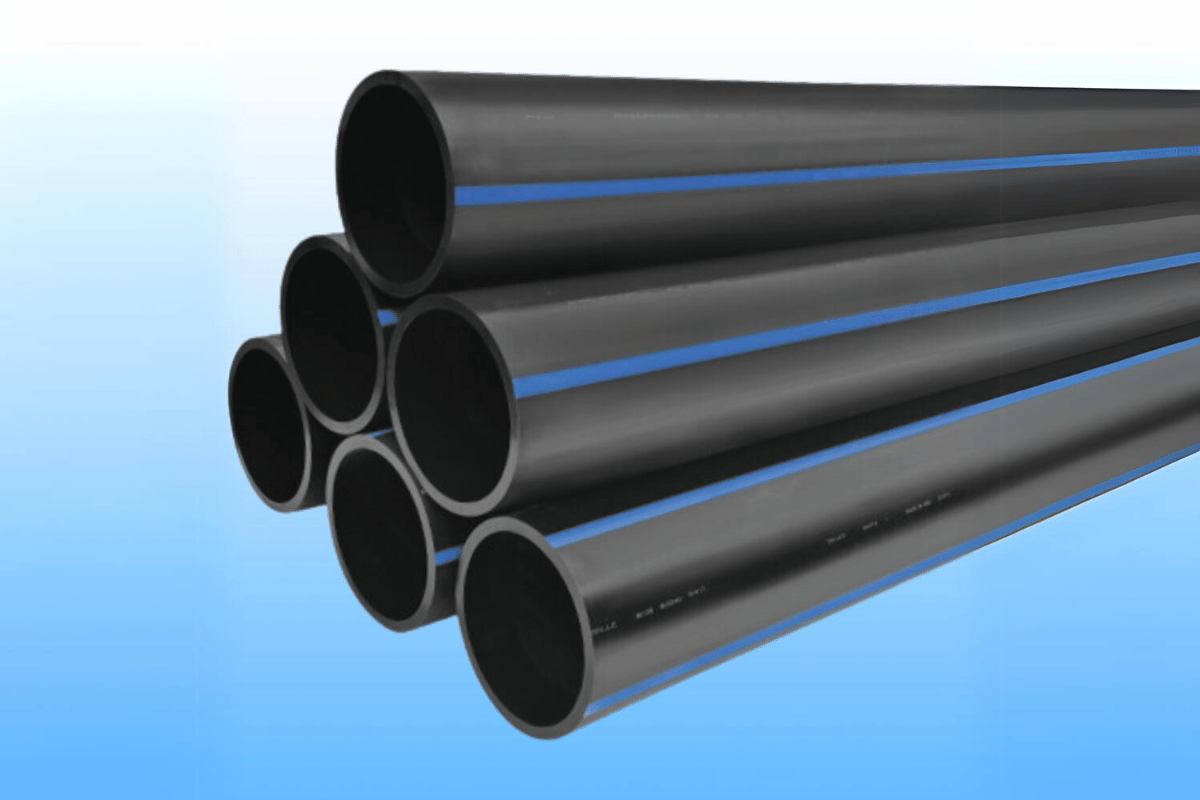
Compared to other piping materials, HDPE pipes have several advantages owing to their properties and flexibility. Such reasons are the high reliability and resistance to degradation, which enables them to be in service for long periods in varying surroundings. In addition, using this material reduces the general time and costs of the project as it is less demanding, especially in challenging terrains and trenchless installations, due to ease of bending. Also, HDPE pipes have good chemical resistance properties that are favourable for transporting dangerous materials and keeping supply systems free of contaminants. It is durable and easy to maintain owing to seamless and leak-proof joints because of the melting joint methods used wisely. In general, these advantages make it possible to prefer HDPE pipes in industries and municipalities growing daily.
Corrosion Resistance
I have found that HDPE pipes have excellent anti-corrosion characteristics by their nature. Unlike metal pipes, HDPE does not rust or get corroded even under aggressive soils and exposure to different chemicals. Since there are no metal parts in the coming pipes, the HDPE pipes have no galvanic or electrolytic corrosion level. Here are some of the critical performance parameters that highlight this advantage:
- Chemical Inertness: Plastic SDS’s chemically inactive polymer composition also makes it safe for operating in contact with chemicals.
- pH Range: Besides, the tolerance limits of pH towards SSDP systems extend high and low from 12 to approximately 4, which guarantees the pipe’s effectiveness under various chemical conditions.
- Service Life: The average limit of service life of these structures is more than 50 years, while retention of structural performance is ensured regardless of deteriorating processes either from physical nature, chemical substances, or intermingled.
Because of its sturdiness and stress resilience against the forces of external environments, HDPE is an unrivaled material for systems that are constructed and are expected to remain in situ for substantial periods.
Impact Resistance
It has come to my attention that these pipes will be able to endure significant physical abuse. This toughness and flexibility of the material allow it to absorb very high forces without any of these parts failing. These attributes are most useful in regions that experience ground shaking or large weights above troops. General technical characteristics that, in this case, make this advantage more robust include:
- Flexural Toughness: HDPE can take a 90-degree bend without breaking the material, which helps in impact.
- High Elasticity: This means a shaped view will be seen after the HDPE has been impacted and deformed.
- Temperature Resilience: Withstanding even the worst temperature, HDPE will still confer impact resistance, enabling performance execution under extreme temperatures.
These properties are useful when the material is used in adverse conditions, making it widely adopted in industries that require mechanical strength.
Environmental Benefits
In this case, elaborating on the environmental aspect of upgrading to HDPE pipes touches upon specific highlights. To begin with, the material is fully recyclable, contributing to ecological sustainability. In this totality, I found out that the long life span of an HDPE means fewer replacements, which reduces disturbances to the environment over a long period. In addition, the use of lightweight HDPE pipes translates to low energy usage at the transport and installation levels, hence their eco-efficiency. These benefits are justified by some technical parameters, which include:
- Recyclability: This choice is indeed better because it is 100% recyclable, making it environmentally friendly.
- Longevity: 50 years of longer lifespan means a lower frequency of replacements, hence, less waste.
- Lightweight Structure: Because they are lightweight, these pipes consume less energy in transportation, thus reducing the carbon emissions involved.
- Non-Toxic Composition: It contains no toxic substances, so water supply systems constructed using this material do not allow harmful fluids to leach into the water.
All of these enrich the environment and increase the pressure to use HDPE materials to construct different structures and bases.
Frequently Asked Questions (FAQs)
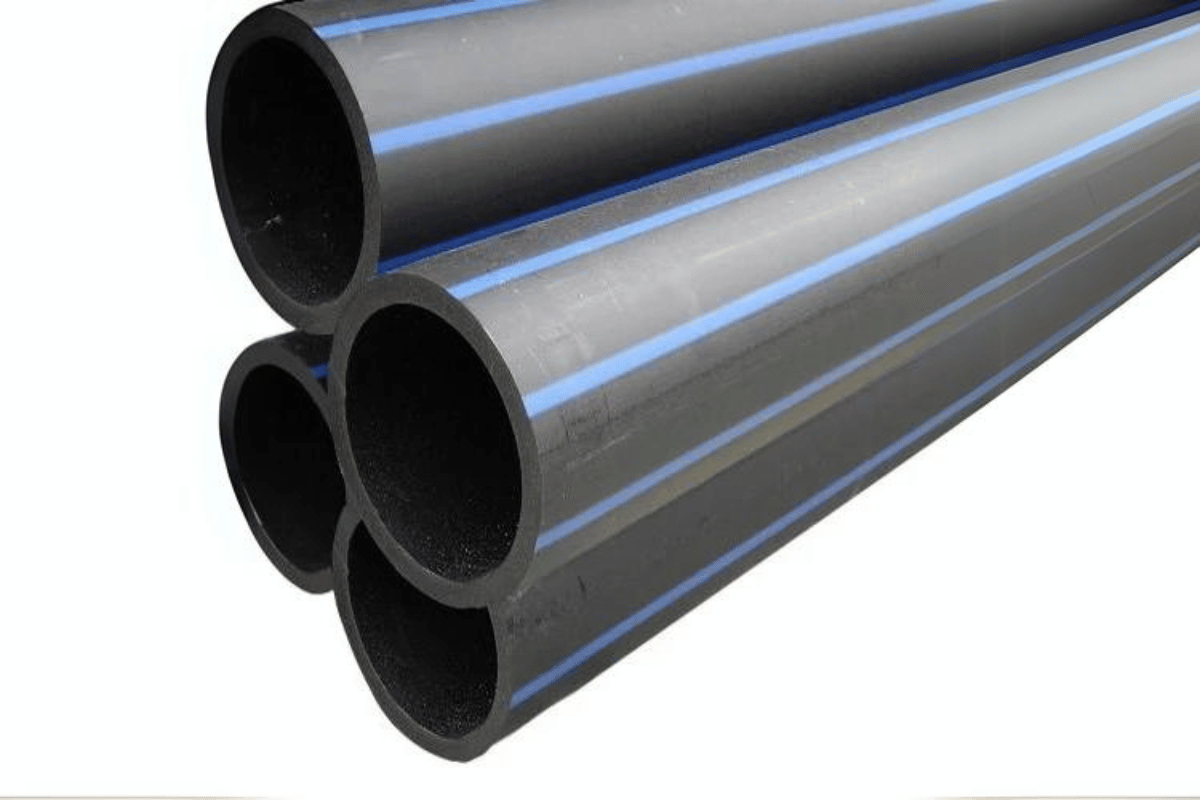
Q: What industries commonly use HDPE pipes?
A: HDPE pipes are widely used in various industries, including water and gas distribution, sewage systems, and agricultural irrigation. They are also popular in mining and industrial applications due to their durability and resistance to chemicals and corrosion.
Q: How does HDPE compare to traditional piping materials?
A: Compared to traditional materials like concrete or metal, HDPE pipes offer superior flexibility, abrasion resistance, and ease of installation. They are also less prone to breakage and can be easily welded, making them ideal for rugged environments.
Q: Can HDPE pipes be used in potable water systems?
A: Yes, HDPE pipes are safe for potable water systems. Their non-toxic composition ensures that they do not leach harmful substances, making them suitable for delivering drinking water.
Q: What are the cost benefits associated with using HDPE pipes?
A: While the initial cost of HDPE pipes might be comparable to other materials, they offer cost savings over time due to their low maintenance requirements and long service life. The reduced need for replacements and repairs further enhances their economic efficiency.
Q: Are there any limitations to using HDPE pipes?
A: HDPE pipes are generally not recommended for high-temperature applications, as they can lose structural integrity beyond certain temperature thresholds. However, HDPE remains highly effective and reliable in most low—to moderate-temperature conditions.





